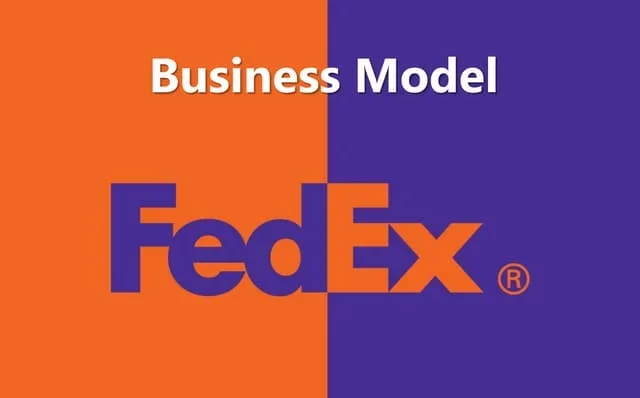FedEx stands as one of the top logistics corporations globally and is widely recognized for its innovative approach to express transportation. Originally founded in the United States, FedEx has grown into a global brand synonymous with reliability, speed, and efficiency. The company was initially called Federal Express and also operated under other trademarks, such as Robert Express and RPS. The iconic FedEx logo was stamped on all its ventures, symbolizing its commitment to timely and efficient deliveries.
About FedEx

The foundation of FedEx dates back to 1971 when Fred Smith, a charter pilot, came up with a groundbreaking idea that revolutionized the logistics industry. Officially launched in 1973, FedEx quickly gained momentum and became the first American company to generate $1 billion in revenue within its first decade. By 2000, the company rebranded as “FedEx,” and today, it holds the title of the world’s largest express delivery company.
FedEx operates in over 220 countries and territories, providing customers with dependable and timely delivery services. Their extensive aviation network and state-of-the-art technologies ensure that they account for almost 99% of the global GDP, a testament to their vast reach and influence. The company caters to both individuals and businesses, offering various logistics and shipping services, including FedEx Ground for affordable deliveries in the U.S. and Canada, FedEx Logistics for comprehensive logistics solutions, and FedEx Freight for customizable freight services. Additionally, FedEx Office supports businesses with printing, shipping, and other services, while FedEx Dataworks leverages data to optimize supply chains and operational efficiency.
Key Activities
FedEx excels in multiple areas that are critical to its success:
- Package Handling: FedEx specializes in the safe and timely handling of goods, ensuring that every package reaches its destination in perfect condition.
- Transportation: The company operates a large fleet of vehicles, trucks, and aircraft, making the transportation of packages and cargo smooth and efficient.
- Technology Innovation: Innovation is a key aspect of FedEx’s success. The company constantly improves customer experience, tracking capabilities, and operational efficiency through cutting-edge technology.
| Company Name | FedEx Corporation |
| Origin Country | United States |
| Founded | 1971 |
| Founders | Frederick W. Smith |
| CEO | Frederick W. Smith |
| Headquarters | Memphis, Tennessee, United States |
| Industry | Courier, Delivery Services |
| Key Services | Express Shipping, Freight Services, Logistics |
| Number of Employees | Over 570,000 (as of last update) |
| Revenue | US$ 84 billion (FY 2021) |
| Official Website | www.fedex.com |
FedEx Business Model
The FedEx business model revolves around offering high-value-added package delivery solutions across the globe. The company operates through wholly-owned subsidiaries, which provide services in e-commerce, transportation, and commercial sectors. FedEx’s operational efficiency is one of its primary strengths, with its delivery reliability rate surpassing 99%.
The company’s hub-and-spoke model plays a critical role in achieving this efficiency. Instead of flying directly to various destinations, FedEx routes its flights through strategically located hubs. This centralized system allows for better organization and quicker turnaround times, reducing overall delivery times for customers. The FedEx business model also emphasizes flexibility, allowing the company to adapt to the ever-changing demands of the global market.
The FedEx Business Model focuses on both B2B (business-to-business) and B2C (business-to-consumer) segments. By customizing services to the unique needs of each segment, FedEx remains competitive in a dynamic industry.
Operating Segments of FedEx
FedEx operates through several key segments, each catering to different logistics needs:
- FedEx Express: This segment is responsible for offering air-ground express services that are time-sensitive. It operates internationally and is known for its speed and precision.
- FedEx Ground: Focused on delivering goods to businesses and homes within North America, this service provides reliable and affordable shipping options.
- FedEx Freight: Specializing in less-than-truckload (LTL) freight services, FedEx Freight offers customizable shipping solutions to meet varying customer demands.
- FedEx Providers: This segment uses technology to resolve global supply chain issues and meet the logistics needs of e-commerce businesses.
Revenue Streams
FedEx generates revenue through several streams, with its primary focus on shipping fees and value-added services. These streams include:
- Shipping Fees: A significant portion of FedEx’s revenue comes from the shipping fees charged to customers for delivering packages and parcels. These fees are an essential component of the company’s overall income.
- Value-Added Services: FedEx offers a range of services beyond just shipping, including packaging, insurance, freight forwarding, and customs clearance. These services contribute additional revenue and provide a more comprehensive solution for customers.
Additionally, FedEx Office and FedEx Logistics contribute to the company’s overall earnings by offering specialized services such as corporate printing, logistics management, and more.
Conclusion
The FedEx business model has enabled the company to maintain its position as a global leader in the logistics and delivery sector. Founded in 1971 and headquartered in Memphis, Tennessee, FedEx has become synonymous with overnight delivery and fast shipping solutions. Its strategic focus on innovation, customer satisfaction, and operational efficiency has allowed it to meet the demands of a rapidly changing global market.
By continuously refining its hub-and-spoke system and embracing technological advancements, FedEx ensures that it can provide reliable delivery services with a focus on speed and efficiency. The FedEx business model, with its emphasis on value-added services and a customer-centric approach, has allowed the company to remain competitive and successful in the logistics industry, catering to both businesses and individuals around the world.














